 Heavybell
Now
•
100%
Heavybell
Now
•
100%
So this is that mewing thing I've heard about, right?
 Heavybell
Now
•
100%
Heavybell
Now
•
100%
Isn't this game fucked up right now? Or did they fix it?
 Heavybell
Now
•
100%
Heavybell
Now
•
100%
I've had another try, this time I set chattr +C on the image directory just in case my using btrfs was causing issues.
 Heavybell
Now
•
100%
Heavybell
Now
•
100%
I had a VM but somehow the virtual drive got corrupted? And it wouldn't let me install, update or uninstall VC++ runtime as a result. I'm gonna try again later, but it's a worrying start.
 Heavybell
Now
•
100%
Heavybell
Now
•
100%
Life when a Vector is a cool crocodile wearing headphones.
 Heavybell
Now
•
100%
Heavybell
Now
•
100%
Ahhh, how logical :P
thanks
 Heavybell
Now
•
100%
Heavybell
Now
•
100%
The fucker is a chaser?
 Heavybell
Now
•
90%
Heavybell
Now
•
90%
The point of use flags is to make it so if you don't want to print, every package that would otherwise pull in CUPS as a dependency can be compiled without it. Stuff like that.
Gentoo also has a good system for handling multiple concurrent installs of different versions of some packages, e.g python.
If there's software you want to install from source that uses automake it's pretty simple to build your own package for it.
Very much a system for doing things your way, and a good way to learn linux IMO. To that end, no there is no installer, but the process is not that complex. Boot a live USB, partition and format a drive, download and extract a base system, install a kernel (there is a fits-most-needs one available now), install a bootloader. Reboot into your new system and continue installing what you need from there.
 Heavybell
Now
•
100%
Heavybell
Now
•
100%
Not for me, I fear. If I'm playing a turn based game I don't want there to be reflex challenges.
 Heavybell
Now
•
100%
Heavybell
Now
•
100%
Sounds interesting, I'd try it but I'm lazy.
However, I will say that anyone who openly condemns this -- or any food preference -- without trying it is the biggest whiney poopoo baby coward on the planet.
 Heavybell
Now
•
100%
Heavybell
Now
•
100%
I remember reading an anecdote about a guy's kid relative, who would describe a game they want to play (not even make themselves), and before describing mechanics even they listed out all the hypothetical microtransactions.
 Heavybell
Now
•
100%
Heavybell
Now
•
100%
Ahh, yeah that makes sense.
 Heavybell
Now
•
100%
Heavybell
Now
•
100%
Gura's partially retired?
 Heavybell
Now
•
80%
Heavybell
Now
•
80%
I personally prefer like/dislike over a star rating system. Maybe, MAYBE having a middle "meh" rating would be helpful but at the end of the day you either recommend something or you don't. If you ask a friend "should I play this?" and they say "idk man" that's basically a recommendation to not play it.
 Heavybell
Now
•
100%
Heavybell
Now
•
100%
There's hope for me yet, then. Though I think FS have long since sailed from what I liked about Soulslikes into something else entirely.
 Heavybell
Now
•
100%
Heavybell
Now
•
100%
Sekiro is not a soulslike, it's Ninja Gaiden. :P
 Heavybell
Now
•
100%
Heavybell
Now
•
100%
This looks like a python programmer that is mad they have to write C# Java…
So I'd like to have a video doorbell set up so that it communicates locally with my HA, raising an event when the button is pressed, allowing me to watch its audio and video stream live, and speak back to whoever is at the door. Ideally either from the browser or my phone, when I'm at home or not. I don't care about motion sensing or AI or even NVR functions really. What software do I need? Should I bother going through the process of setting up Frigate or is there something simpler that would do the job?
cross-posted from: https://lemmy.world/post/15565311 > It was a long running project, but I finally did it. I built what I'm calling a smart mailbox that communicates the presence of mail locally with Home Assistant via ESPHome. > > Parts: > - Pine plank roughly the width of my mailbox > - Treated pine plank for mounting > - Thin sheet of perspex or similar transparent plastic > - 2x [VCNL4010 proximity sensor](https://www.aliexpress.com/item/1005005450411501.html) > - [ESP32 dev board with antenna](https://www.aliexpress.com/item/1005001438925793.html) > - [Bigger antenna](https://www.aliexpress.com/item/1005006208040822.html) > - [Prototype board](https://www.aliexpress.com/item/1005004818919331.html) > - [2.54mm pitch JST connectors](https://www.aliexpress.com/item/1005003667406240.html) > - [2.54mm pitch pin header sockets](https://www.aliexpress.com/item/4001198421663.html) > - 18650 battery > - [18650 Type-C charging module](https://www.aliexpress.com/item/32786777105.html) > - Battery holder > - 2x [5V 1.5W solar panels](https://www.aliexpress.com/item/33019015032.html) > - [MCP1700-3302E LDO regulator](https://www.aliexpress.com/item/1005001608339185.html) > - [100uF electrolytic capacitor](https://www.aliexpress.com/item/1005005691916127.html) > - [100nF ceramic capacitor](https://www.aliexpress.com/item/32973259342.html) > - Resistors... I think I ended up using a 1 MOhm and a 330 kOhm > - [Weatherproof junction box](https://www.bunnings.com.au/deta-211mm-weatherproof-junction-box-ip56_p4330860) > - [Nylon screw spacers](https://www.aliexpress.com/item/32862529967.html) > - [Cable glands](https://www.aliexpress.com/item/1005006211622214.html) > - [12mm waterproof button](https://www.aliexpress.com/item/4001362443186.html) > - Various cables and wires > - Paint and polyurethane spray to weatherproof the wood > > Tools: > - Soldering iron > - Router for cutting grooves in wood > - Drill and hole saw bits > - Various files and sandpaper > > For a start, I followed [this guide](https://randomnerdtutorials.com/power-esp32-esp8266-solar-panels-battery-level-monitoring/) to get me started on the power delivery portion, but I ended up using much higher valued resistors since I found that I was losing more battery charge through the voltage divider than I was from the ESP32 or proximity sensors. > > Once I'd tested the concept with the parts just laying in a jumble on the table, it was time to get to work. > > I started by cutting a plank of pine to fit my mailbox, chamfering the ends to make space for the metal joins. I routed out some spaces for the tops of the bolts that hold the mailbox down. > > 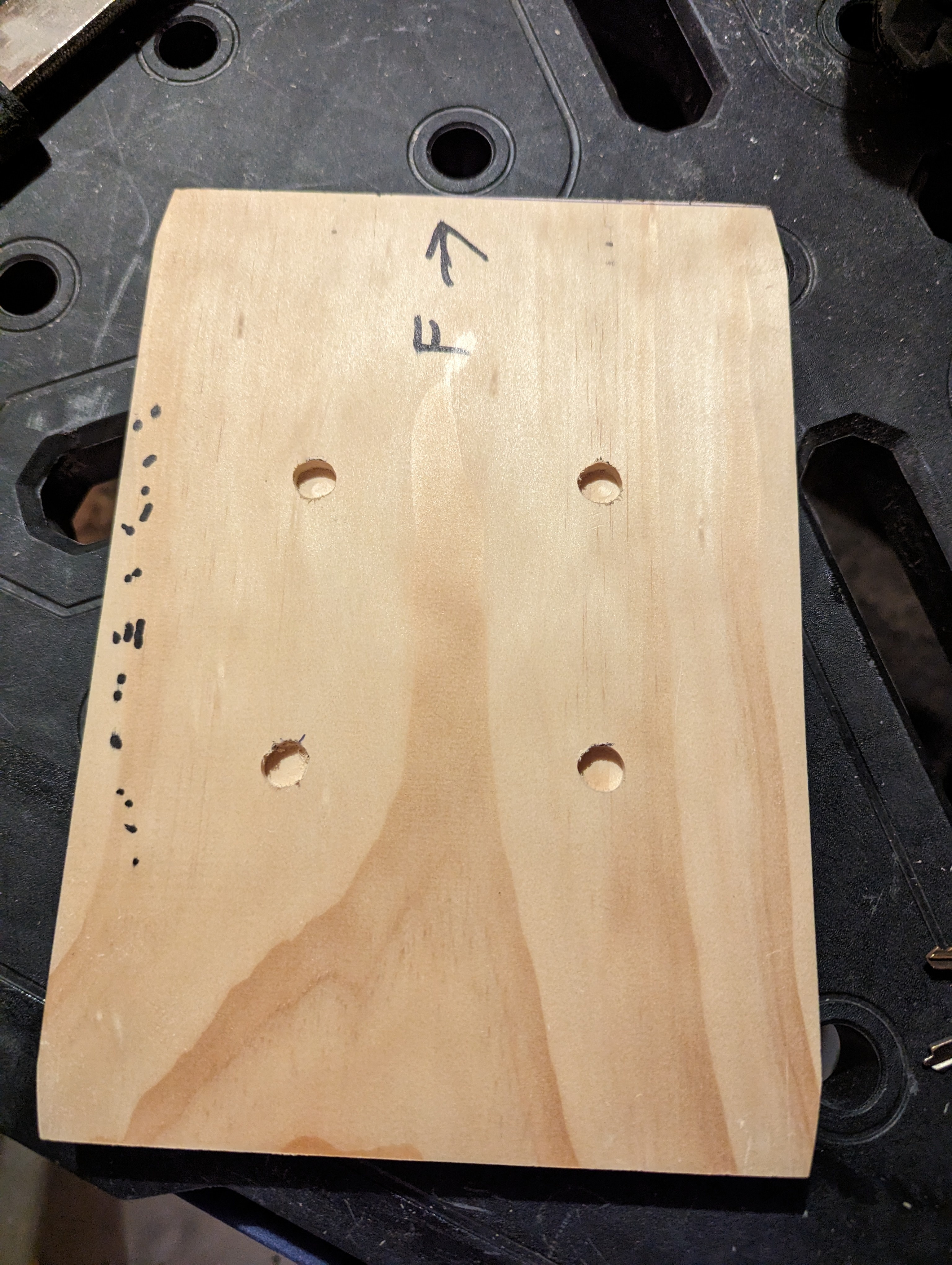 > > Measured out where the sensors should go, along with a surrounding space to screw down some little perspex windows to cover them. The idea I wanted was for the mail to be able to slide over the sensors without getting caught on them, as well as to protect them from dust. > > 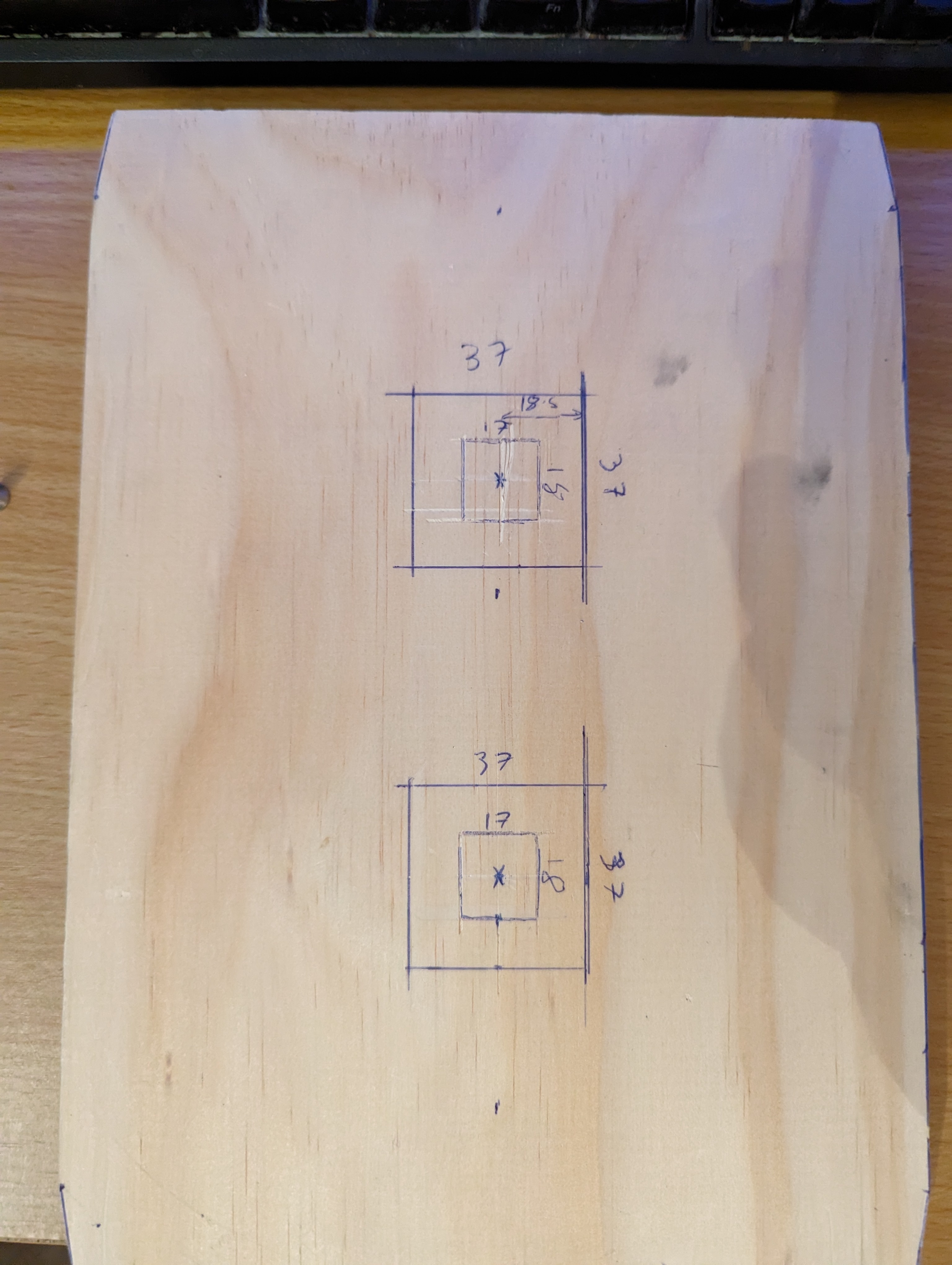 > > Routed out the dents and cleaned them up with a chisel and sandpaper. Cut the perspex to shape for a test fit. > >  > > On the other side, I routed out a notch for the cable to access the sensors. > > 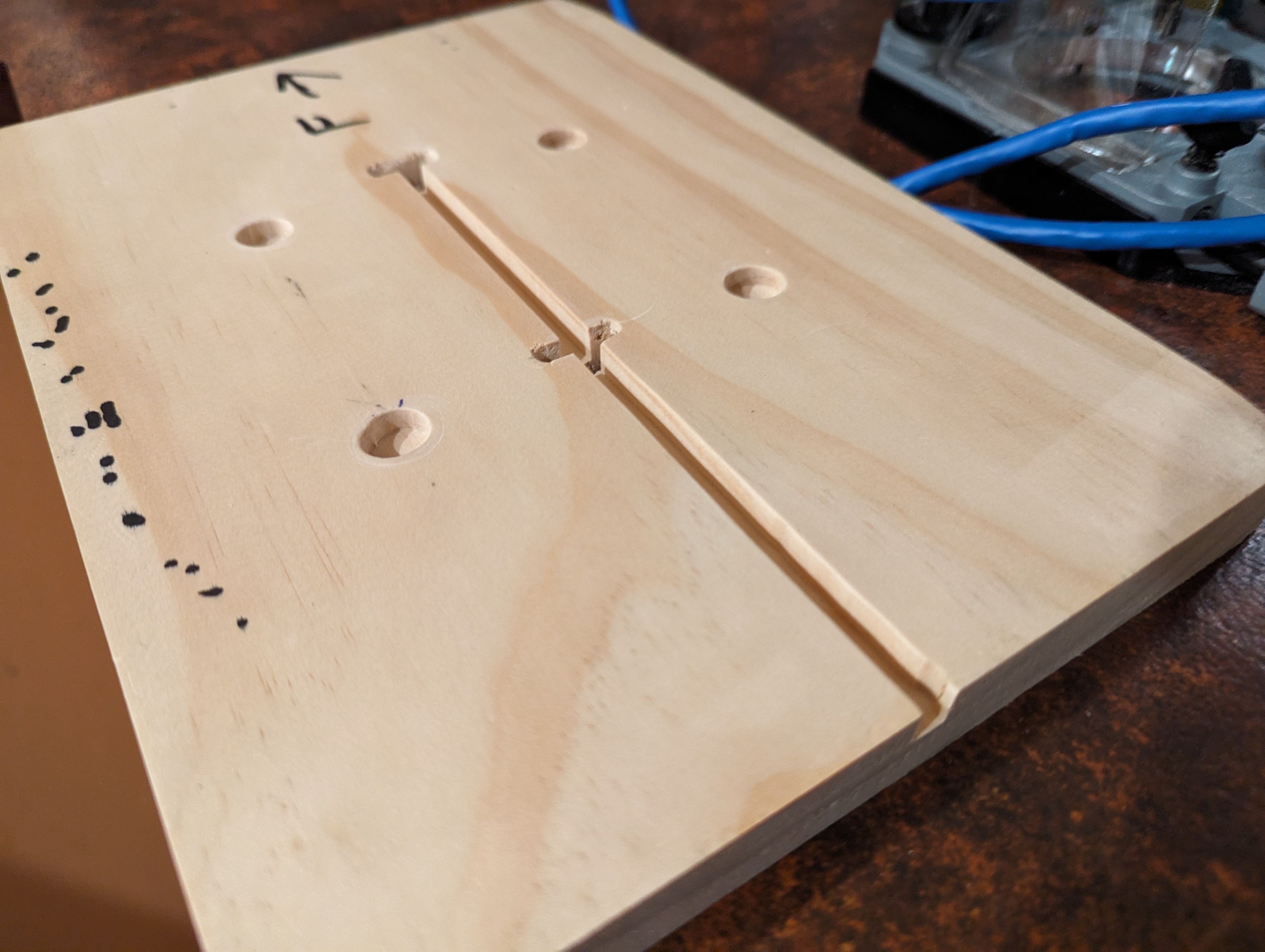 > > I had originally planned to just solder wires into the sensors, but then I realised JST connectors would fit perfectly into the sensors. This meant I had to widen the holes somewhat, which I did with a small chisel and file. > > 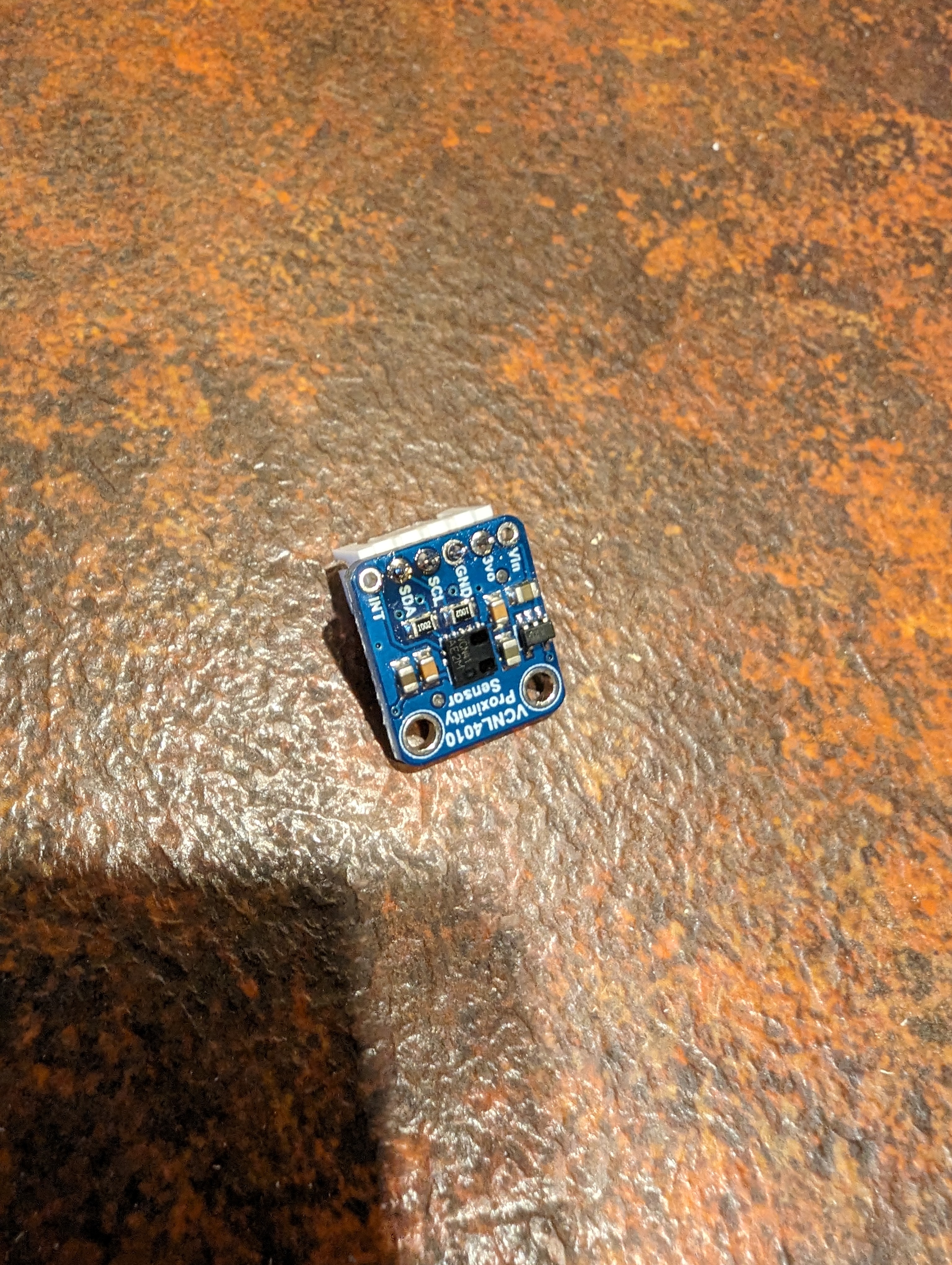 > > I got a bit lazy with making screw holes to hold down the perspex, so they're not in as neat a place as I'd like. If I did this again I'd measure properly for their placement. Still, with countersinking they hold down the perspex well and nothing sticks up for mail to get caught on. > >  > > I also got started on making a housing for the solar panels. I used the router to carve out a 1-2mm area for them to sit in, and a much deeper ditch linking the two terminals, which you'll see in a later picture. For now, here's how they look sitting in it. > >  > 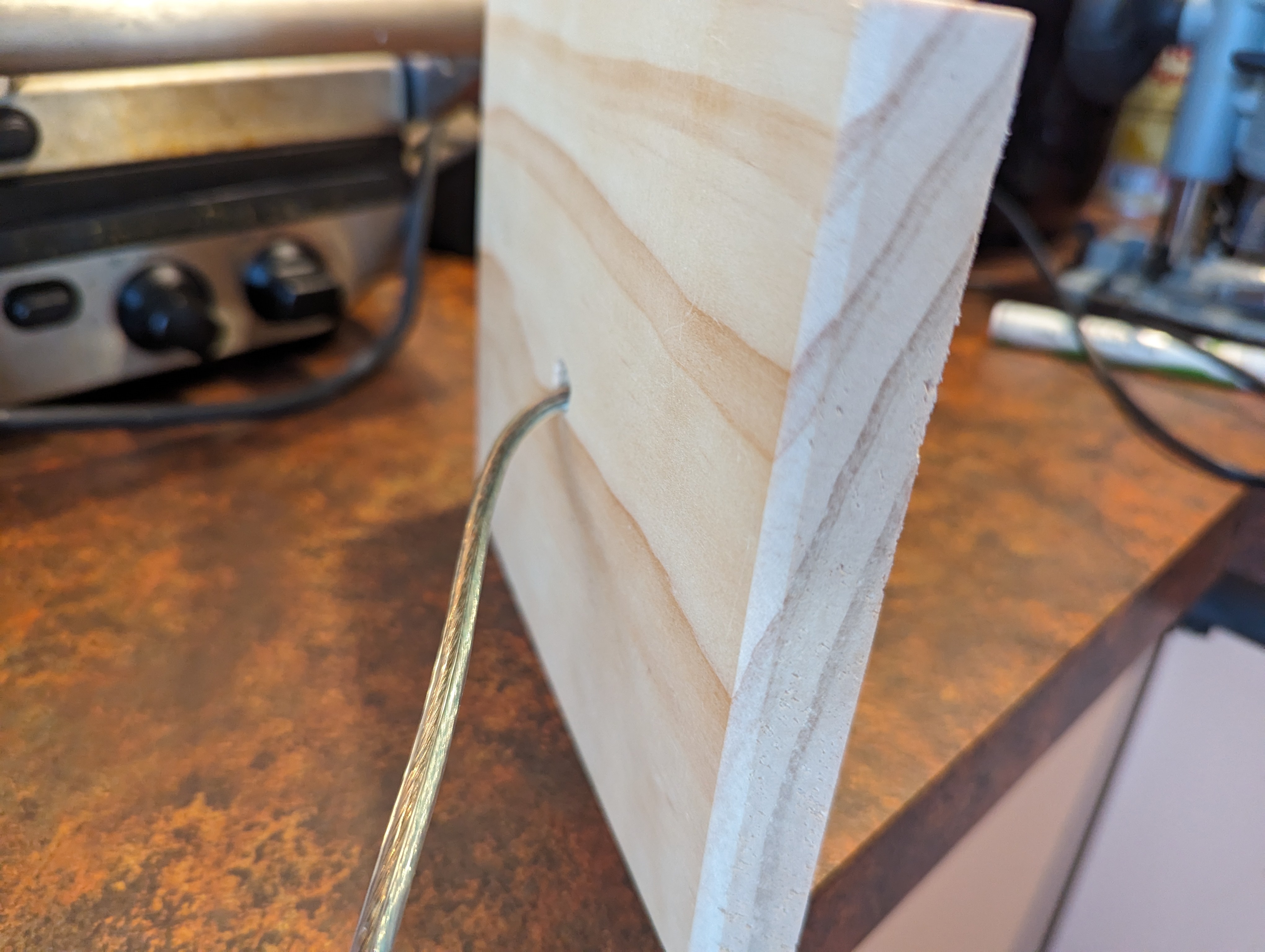 > > Wiring up the prototype board was next. Again, see the article I linked above for how this works. I used pin headers to allow the ESP32 dev board to be slotted in and out, just in case I ever needed to take it out for replacement or reprogramming. Also the JSTs on the prototype board are for connecting the battery (top left), connecting the solar panels (bottom left), providing power to the sensors (bottom right) and clock and data lines for the sensors (top right). Since the sensors are both using the same I2C bus address and cannot be configured otherwise, I had to run two clock and data lines, but if I'd found sensors that could have different addresses I could have just used one of each. I didn't take a photo of the board at this stage, but I later added another header to connect a button to reset the ESP32 from the outside. > >  > > I also made the data and power cable for the sensor board. > > 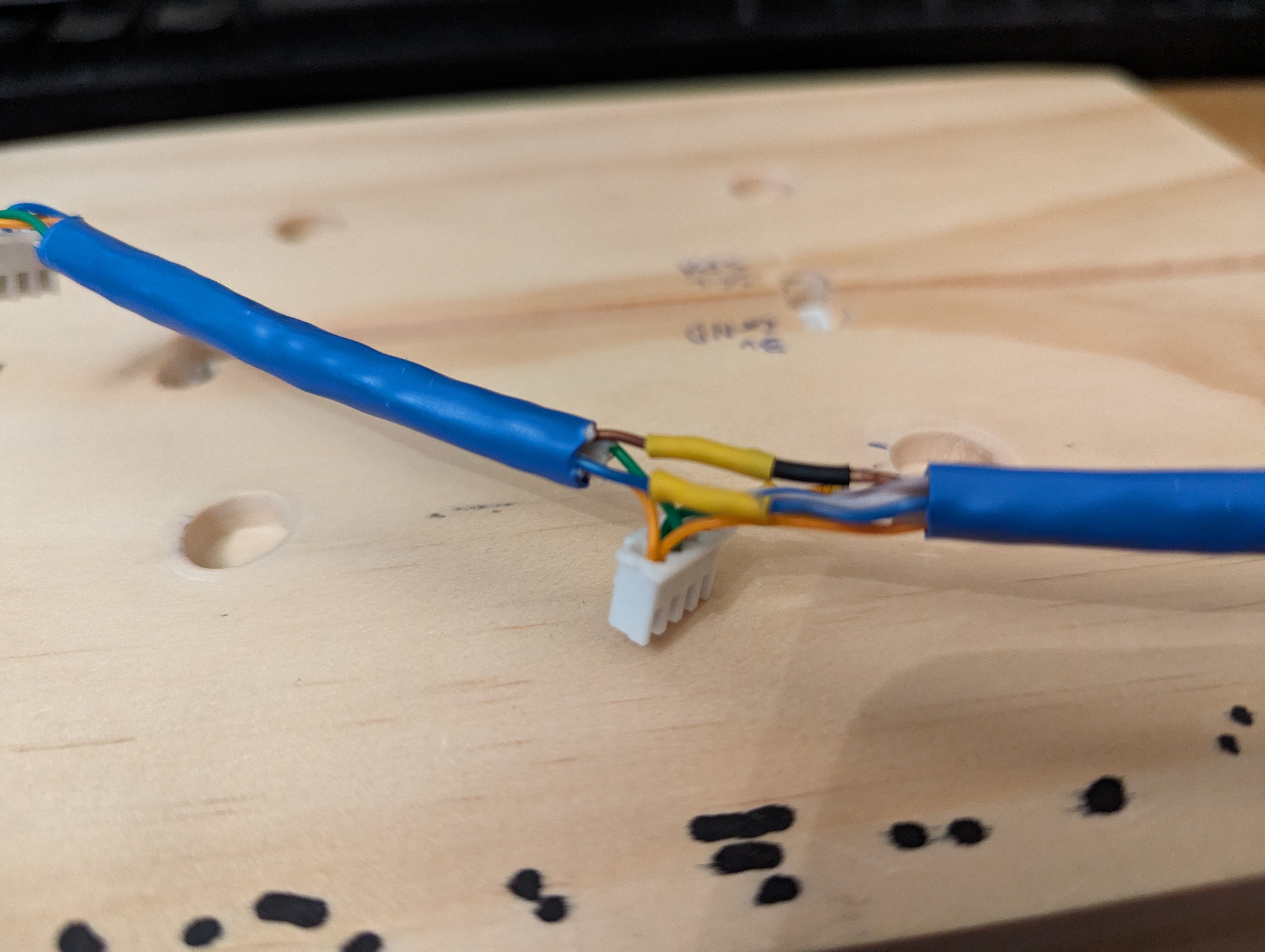 > > The solar panel housing and 'sensor plate' were both painted and treated with polyurethane spray to protect them from rain and humidity. > > 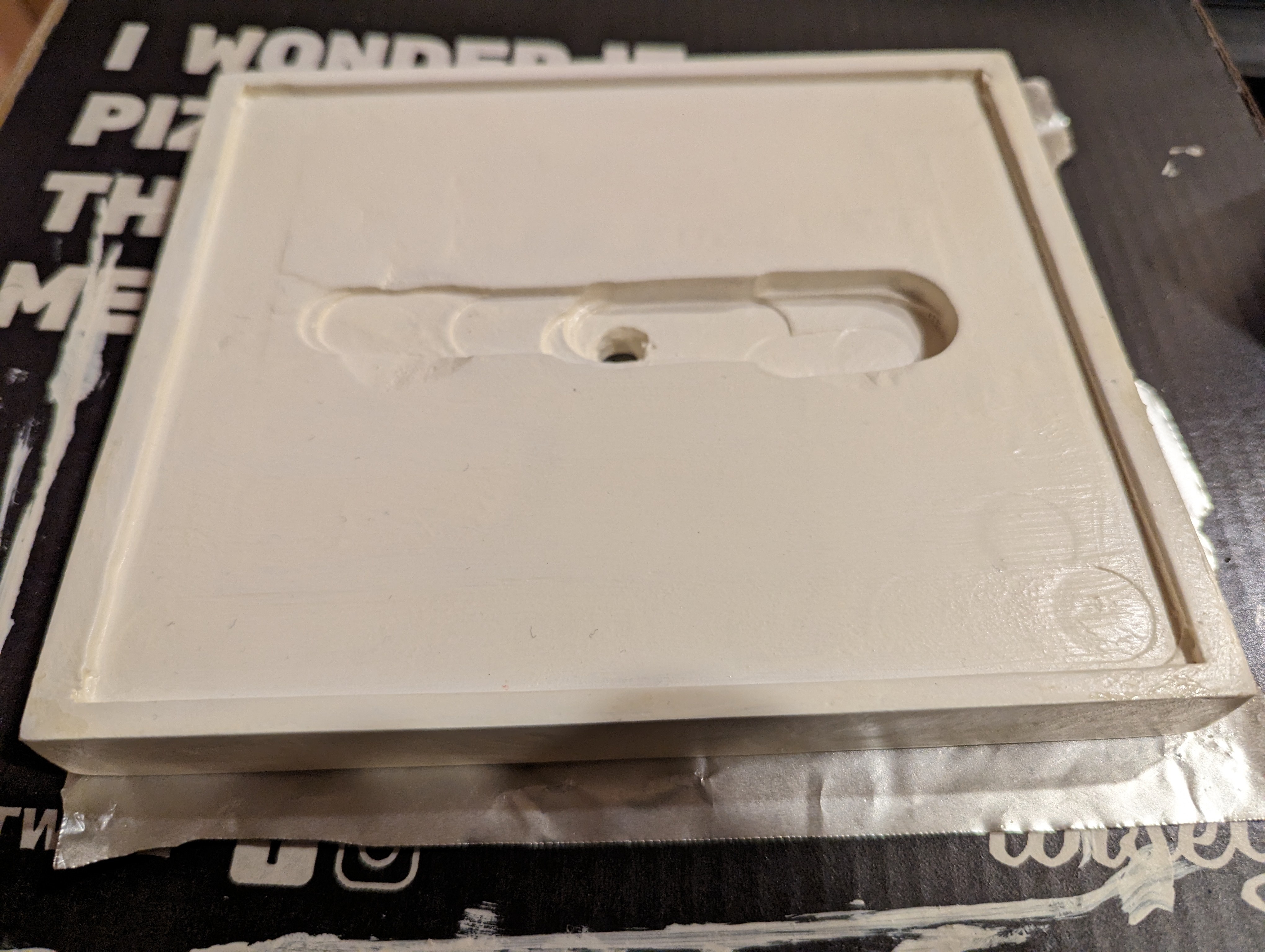 >  > > I drilled holes in the weatherproof box to fix the cable glands and the weatherproof button. In the case of the solar panel wire, I had opted to buy speaker wire since I figured it would be easier to run in the channel between the two solar panels, being flat. But that also made it not really fit the cable glands that great. I ended up stripping some of the outer sheath off some 2 wire power cable I had, and wrapping that around the part of the speaker wire that gets clamped in the glands, just to make a reasonable seal. These all were on the side I decided I would mount at the bottom, so water wouldn't be able to easily fall into the box. > >  > > Final test fit. I later used epoxy glue to glue down the nylon headers and the battery holder inside the box. > > 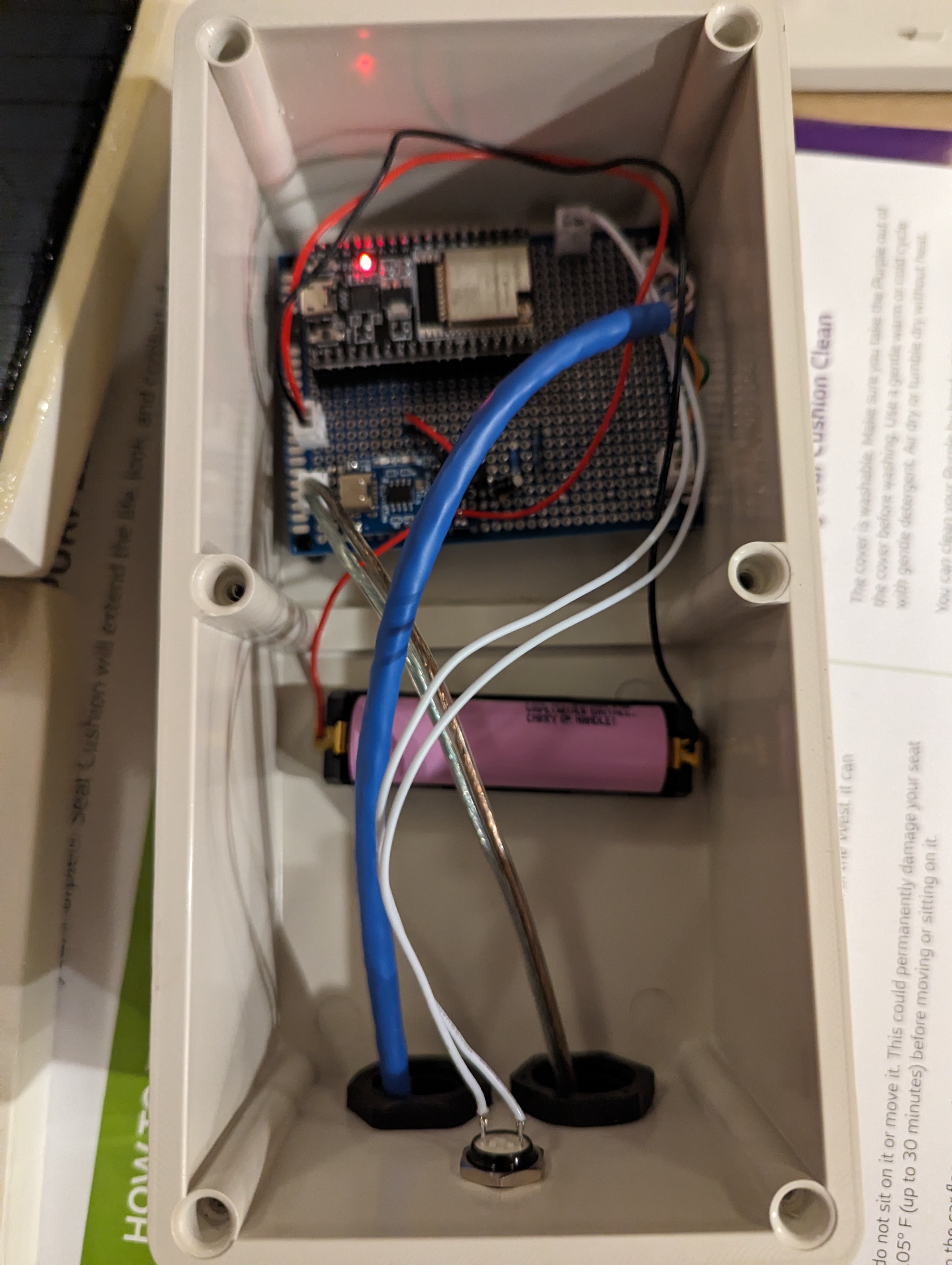 > > The mailbox itself also needed a hole in the bottom for the sensor cable to come out. After drilling a hole and filing it into a square shape, I cut some rubber grommet strip to size and fitted it around the hole, with some marine silicone adhesive to protect the sharp metal edges from water and to hold the grommet strip in place. > > 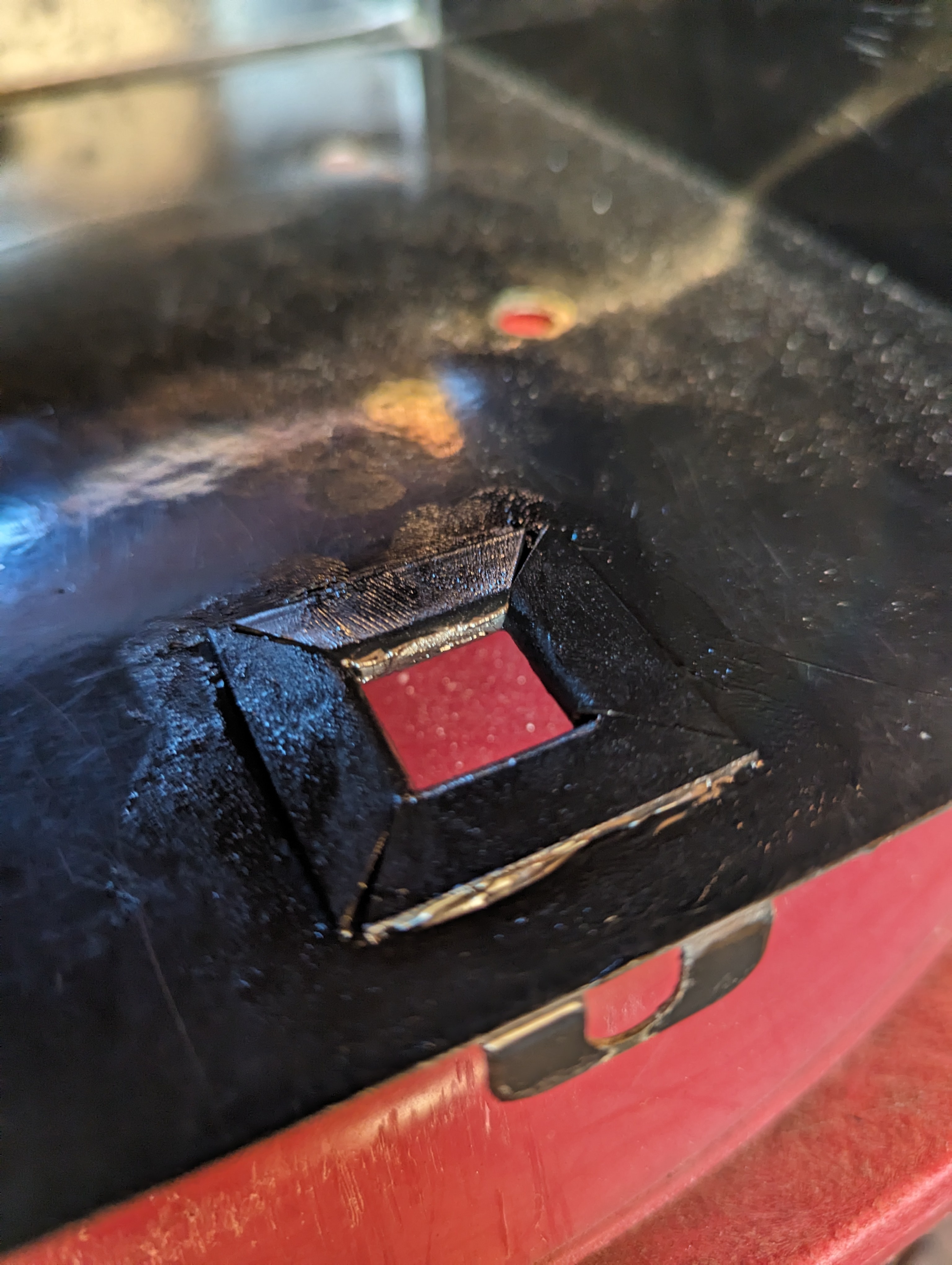 > > I'd drilled some holes in the brick wall my mailbox sits upon for masonry anchors, and this piece of treated pine got the last of my polyurethane spray, just in case. > > 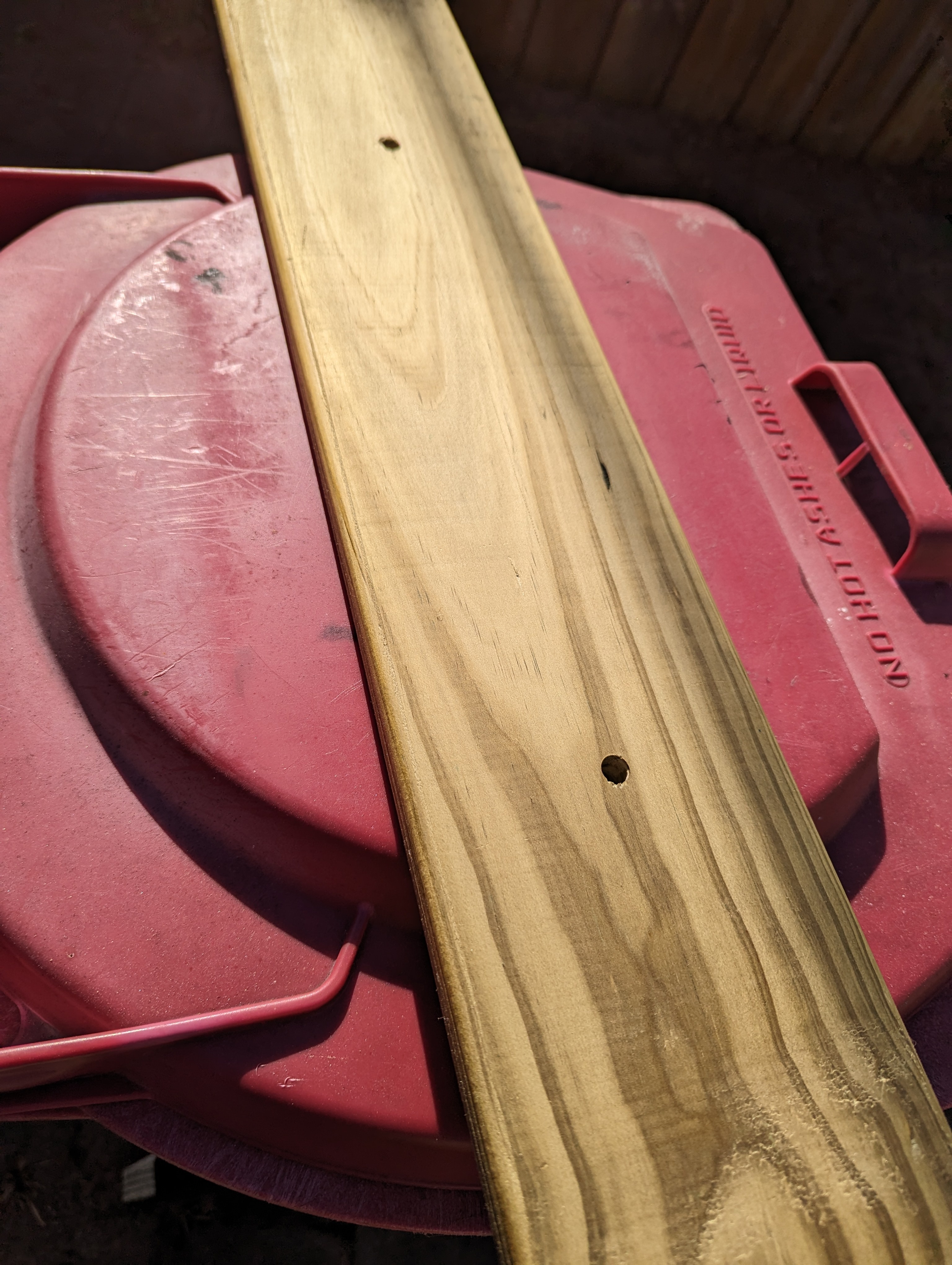 > > Using a two pieces of the leftover perspex glued together, I made an internal mount for the antenna, figuring it would be best to not have the thing either floating around freely inside the box or sticking out the side where people could potentially break it off. > >  > 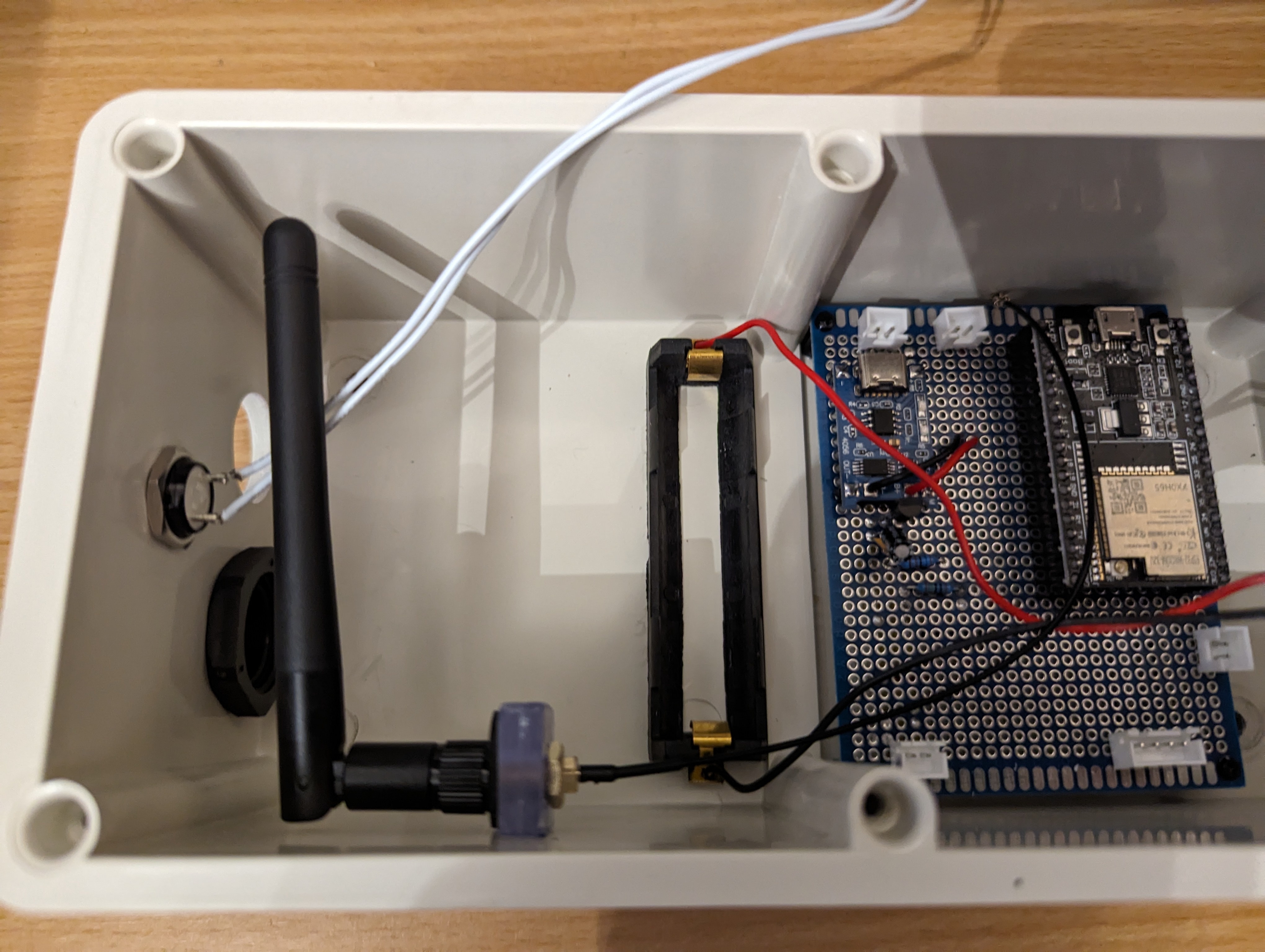 > > Finally, after weeks of off and on work, it was ready to install. > >  >  > > The ESPHome coding used [my VCNL4010 component](https://github.com/dixonte/esphome-vcnl4010), and if anyone is interested I can share it but it's kinda a large file.
It was a long running project, but I finally did it. I built what I'm calling a smart mailbox that communicates the presence of mail locally with Home Assistant via ESPHome. Parts: - Pine plank roughly the width of my mailbox - Treated pine plank for mounting - Thin sheet of perspex or similar transparent plastic - 2x [VCNL4010 proximity sensor](https://www.aliexpress.com/item/1005005450411501.html) - [ESP32 dev board with antenna](https://www.aliexpress.com/item/1005001438925793.html) - [Bigger antenna](https://www.aliexpress.com/item/1005006208040822.html) - [Prototype board](https://www.aliexpress.com/item/1005004818919331.html) - [2.54mm pitch JST connectors](https://www.aliexpress.com/item/1005003667406240.html) - [2.54mm pitch pin header sockets](https://www.aliexpress.com/item/4001198421663.html) - 18650 battery - [18650 Type-C charging module](https://www.aliexpress.com/item/32786777105.html) - Battery holder - 2x [5V 1.5W solar panels](https://www.aliexpress.com/item/33019015032.html) - [MCP1700-3302E LDO regulator](https://www.aliexpress.com/item/1005001608339185.html) - [100uF electrolytic capacitor](https://www.aliexpress.com/item/1005005691916127.html) - [100nF ceramic capacitor](https://www.aliexpress.com/item/32973259342.html) - Resistors... I think I ended up using a 1 MOhm and a 330 kOhm - [Weatherproof junction box](https://www.bunnings.com.au/deta-211mm-weatherproof-junction-box-ip56_p4330860) - [Nylon screw spacers](https://www.aliexpress.com/item/32862529967.html) - [Cable glands](https://www.aliexpress.com/item/1005006211622214.html) - [12mm waterproof button](https://www.aliexpress.com/item/4001362443186.html) - Various cables and wires - Paint and polyurethane spray to weatherproof the wood Tools: - Soldering iron - Router for cutting grooves in wood - Drill and hole saw bits - Various files and sandpaper For a start, I followed [this guide](https://randomnerdtutorials.com/power-esp32-esp8266-solar-panels-battery-level-monitoring/) to get me started on the power delivery portion, but I ended up using much higher valued resistors since I found that I was losing more battery charge through the voltage divider than I was from the ESP32 or proximity sensors. Once I'd tested the concept with the parts just laying in a jumble on the table, it was time to get to work. I started by cutting a plank of pine to fit my mailbox, chamfering the ends to make space for the metal joins. I routed out some spaces for the tops of the bolts that hold the mailbox down.  Measured out where the sensors should go, along with a surrounding space to screw down some little perspex windows to cover them. The idea I wanted was for the mail to be able to slide over the sensors without getting caught on them, as well as to protect them from dust.  Routed out the dents and cleaned them up with a chisel and sandpaper. Cut the perspex to shape for a test fit.  On the other side, I routed out a notch for the cable to access the sensors.  I had originally planned to just solder wires into the sensors, but then I realised JST connectors would fit perfectly into the sensors. This meant I had to widen the holes somewhat, which I did with a small chisel and file.  I got a bit lazy with making screw holes to hold down the perspex, so they're not in as neat a place as I'd like. If I did this again I'd measure properly for their placement. Still, with countersinking they hold down the perspex well and nothing sticks up for mail to get caught on.  I also got started on making a housing for the solar panels. I used the router to carve out a 1-2mm area for them to sit in, and a much deeper ditch linking the two terminals, which you'll see in a later picture. For now, here's how they look sitting in it.   Wiring up the prototype board was next. Again, see the article I linked above for how this works. I used pin headers to allow the ESP32 dev board to be slotted in and out, just in case I ever needed to take it out for replacement or reprogramming. Also the JSTs on the prototype board are for connecting the battery (top left), connecting the solar panels (bottom left), providing power to the sensors (bottom right) and clock and data lines for the sensors (top right). Since the sensors are both using the same I2C bus address and cannot be configured otherwise, I had to run two clock and data lines, but if I'd found sensors that could have different addresses I could have just used one of each. I didn't take a photo of the board at this stage, but I later added another header to connect a button to reset the ESP32 from the outside.  I also made the data and power cable for the sensor board.  The solar panel housing and 'sensor plate' were both painted and treated with polyurethane spray to protect them from rain and humidity.   And the panels themselves were sealed in with a tonne of silicone. It made a real mess, but I'm confident no water is going to get in there. 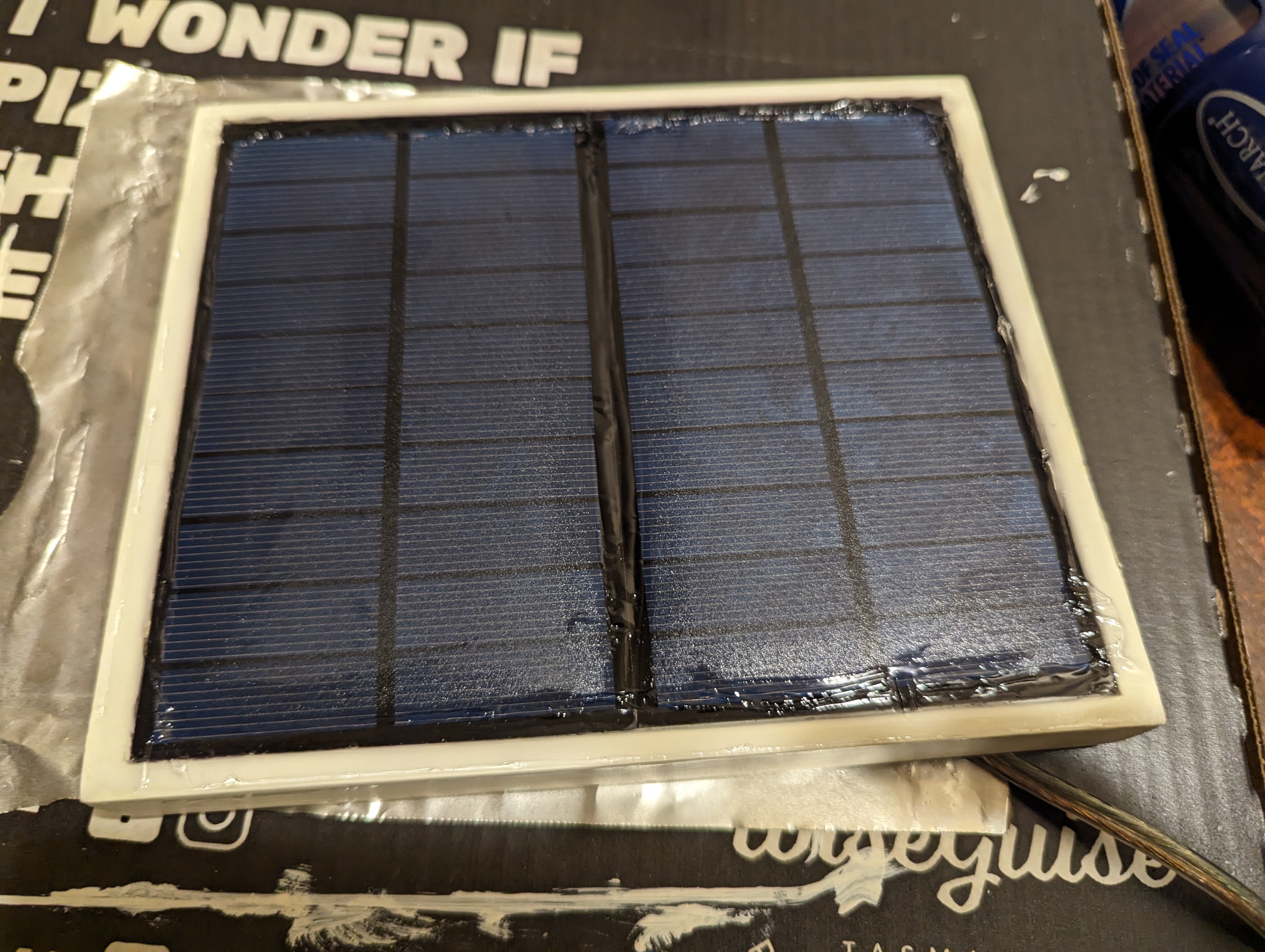 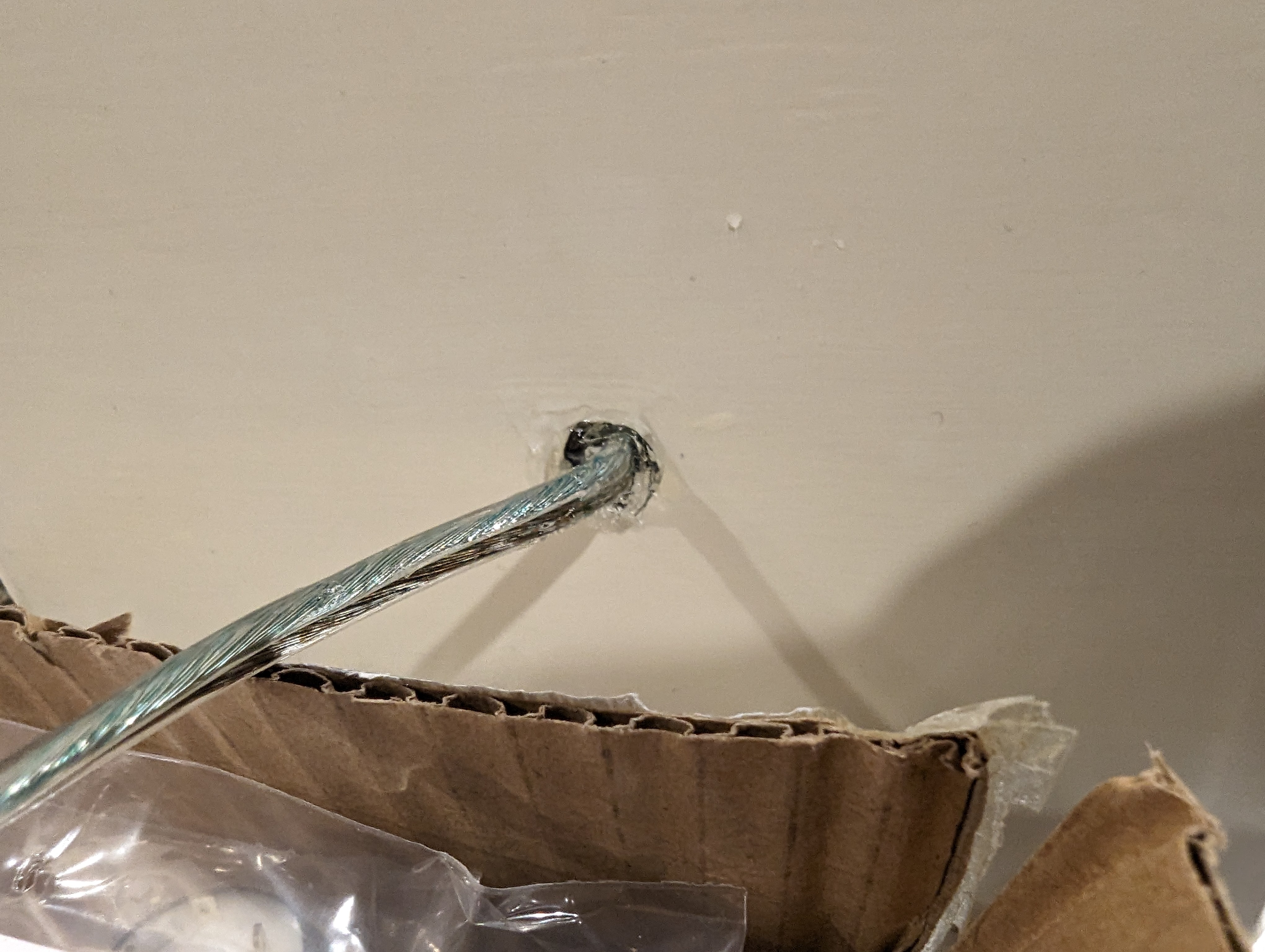 I drilled holes in the weatherproof box to fix the cable glands and the weatherproof button. In the case of the solar panel wire, I had opted to buy speaker wire since I figured it would be easier to run in the channel between the two solar panels, being flat. But that also made it not really fit the cable glands that great. I ended up stripping some of the outer sheath off some 2 wire power cable I had, and wrapping that around the part of the speaker wire that gets clamped in the glands, just to make a reasonable seal. These all were on the side I decided I would mount at the bottom, so water wouldn't be able to easily fall into the box.  Final test fit. I later used epoxy glue to glue down the nylon headers and the battery holder inside the box. This means the prototype board can also be easily removed, as can the ESP32 dev board and the battery, but the battery holder cannot. Let's hope I never have to get that thing out.  The mailbox itself also needed a hole in the bottom for the sensor cable to come out. After drilling a hole and filing it into a square shape, I cut some rubber grommet strip to size and fitted it around the hole, with some marine silicone adhesive to protect the sharp metal edges from water and to hold the grommet strip in place.  I'd drilled some holes in the brick wall my mailbox sits upon for masonry anchors, and this piece of treated pine got the last of my polyurethane spray, just in case.  Using a two pieces of the leftover perspex glued together, I made an internal mount for the antenna, figuring it would be best to not have the thing either floating around freely inside the box or sticking out the side where people could potentially break it off.   Finally, after weeks of off and on work, it was ready to install.   The ESPHome coding used [my VCNL4010 component](https://github.com/dixonte/esphome-vcnl4010), and if anyone is interested I can share it but it's kinda a large file. I had originally planned to just use Arduino IDE and talk directly to MQTT, in order to keep things simple and just use the Adafruit VCNL4010 library, but in the end elected to use ESPHome. For, among other things, its support for over the air updates.
 github.com
github.com
cross-posted from: https://lemmy.world/post/12979137 > I made an ESPHome external component for the VCNL4010 proximity sensor. > > Hopefully it's of use to someone.
 github.com
github.com
I made an ESPHome external component for the VCNL4010 proximity sensor. Hopefully it's of use to someone.
 Now
Now
